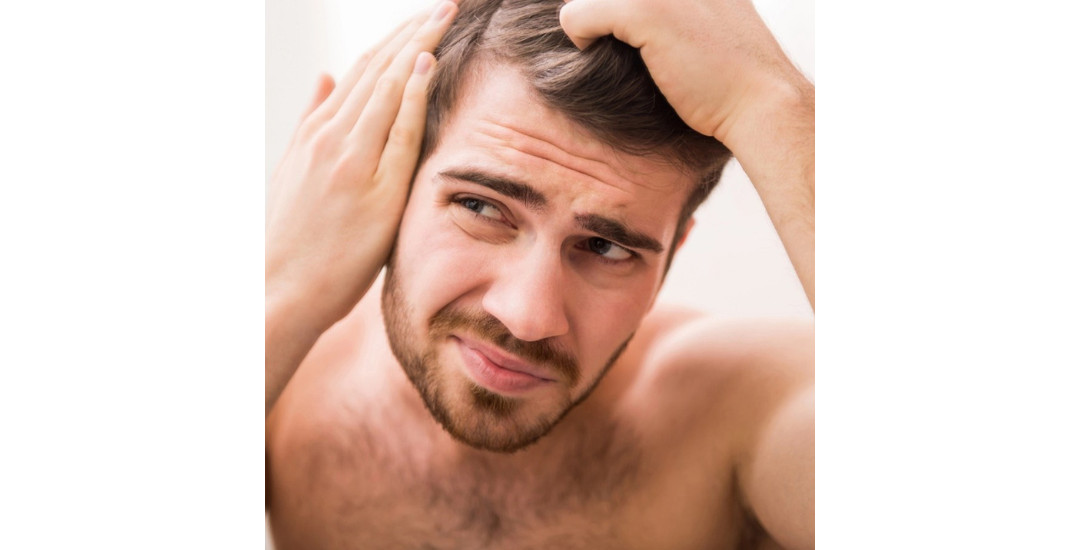From Bald to Bold: Top Strategies for Combating Hair Loss

Understanding and Addressing Hair Loss
Hair loss can be a distressing experience, affecting not just our appearance but also our self-confidence. Whether due to genetics, stress, or environmental factors, it's a common issue many face. Fortunately, there are remedies available to combat hair loss, ranging from natural treatments to medical solutions.
You Aren’t Alone – Hair Loss is Very Common
Hair loss affects a significant portion of both male and female populations, with prevalence increasing with age(1,2):
For men:
- By age 35, approximately 66% experience noticeable hair loss
- By age 50, about 85% have significantly thinning hair
For women:
- By age 50, roughly 40% have noticeable hair loss
Common Causes of Hair Loss(3,4)
- Androgenetic alopecia: This hereditary condition, also known as male or female pattern baldness, affects 80% of men and 50% of women who experience hair loss. Genetic factors, age, and androgens all play a part in this type of hair loss.
- Stress-induced alopecia: Stress increases cortisol levels, negatively affecting hair follicle formation leading to telogen effluvium.
- Telogen effluvium: This reversible condition is triggered by physiological stress, medical conditions, rapid weight loss, or prolonged fasting.
- Nutritional deficiencies: Lack of protein, iron, zinc, or biotin can contribute to hair loss, especially in people on restrictive diets or women with heavy menstrual flow. Weight loss drugs, such as the GLP-1 class, can also contribute to temporary hair loss due to lower appetite and poor diet.
- Medical conditions: Thyroid disorders, lupus, and hormonal imbalances can cause hair loss.
- Medications: Certain drugs for cancer, arthritis, depression, heart disease, and high blood pressure may have hair loss as a side effect.
- Aging: Decreased hormone production with age can shorten the hair's life cycle and reduce scalp hair density.
- Hairstyling practices: Tight braiding, excessive heat styling, and harsh chemical treatments can lead to traumatic alopecia.
- Infections: Fungal infections like tinea capitis or untreated STIs such as syphilis can cause patchy hair loss.
Know the Cause
Some types of hair loss may be obvious. The vast majority of hair loss is genetic in nature, but it is important to know if this is the cause. From starting a new medication to genetic factors, hormone imbalances and nutritional deficiencies, it is imperative you know the cause of hair loss. Treating the symptoms without fully understanding the cause is a recipe for further health decline. Your body is telling you something isn’t in balance. A trip to your healthcare provider can help you find the root cause. Knowing and addressing the cause will lead to effective interventions that can help improve your health and confidence.

Interventions – Nutritional and Medical(5,6)
Several nutritional deficiencies have been linked to hair loss:
- Iron deficiency (particularly important for women)
- Vitamin D deficiency
- Zinc deficiency
- General protein malnutrition
In addition to targeted supplementation, the Mediterranean diet, characterized by high levels of antioxidants, anti-inflammatory components, and unsaturated fats, has been associated with improved hair growth and reduced hair loss.
Other interventions include:
- Scalp massage, which increases circulation to hair follicles.
- Low Level Laser Light Therapy stimulates cell growth and shows promise especially in people with androgenetic alopecia.
- Hyperbaric oxygen therapy
- Stress reduction techniques like meditation or exercise.
- Oral Finasteride: Works by reducing scalp dihydrotestosterone levels, which slows hair loss progression and promotes hair growth. This medication requires a prescription.(6)
- Topical Minoxidil: Effective for hair regrowth by prolonging the anagen phase of hair follicles and stimulating follicular proliferation. This product is available over the counter.(7)
Citations:
- American Hair Loss Association. (n.d.). Men's Hair Loss. Link
- Fabbrocini, G., et al. (2018). Female pattern hair loss: A clinical, pathophysiologic, and therapeutic review. International Journal of Women's Dermatology, 4(4), 203-211.
- Gokce N, et al. (2022). An overview of the genetic aspects of hair loss and its connection with nutrition. J Prev Med Hyg, 63(2 Suppl 3):E228-E238.
- Drugs.com. (2024). Do Ozempic, Wegovy, Mounjaro & Zepbound cause hair loss? Link
- Medical News Today. (n.d.). Best ways to stop hair loss. Link
- Leyden, J., et al. (1999). Finasteride in the treatment of men with frontal male pattern hair loss. J Am Acad Dermatol, 40(6), 930-937.
- Suchonwanit P, et al. (2019). Minoxidil and its use in hair disorders: a review. Drug Des Devel Ther, 13:2777-2786.
Written By: Brooke Lounsbury














